
When traveling in Japan, have you ever noticed certain “designs” or “characters” that appear repeatedly on souvenir packaging, kimono patterns, or the buildings of shrines?
For example, animals like the crane or turtle, or plants such as pine trees. All of these are considered lucky symbols in Japan, known as “engimono.” Even lucky charms and items like omamori or kumade, which are given at shrines and temples, are actually made by combining these individual lucky motifs.
This time, we have carefully selected 25 representative “auspicious motifs” hidden within Japanese culture to introduce to you. By learning the meanings behind each one, you’ll be able to find souvenirs with wonderful messages when shopping in Japan!
What is “Engi”? Its Meaning and Place in Modern Japan
The word “engi” originally comes from a Buddhist term (the Sanskrit “pratītya-samutpāda”), which means “everything has a cause and effect.” In Japanese, this is called “innen shōki,” and was later shortened to “engi.”
In modern Japan, when something is said to be “engi ga ii” (auspicious), it means “a sign that something good will happen” or “good luck.”
Many foreign visitors to Japan see tanuki or maneki-neko and think of them as “cute decorations” or “fun souvenirs.” However, Japanese “engimono” are not just ornaments. They are objects that embody people’s wishes for happiness and their beliefs, passed down through generations.
Each engimono carries a specific power or wish, such as “wealth,” “health,” “longevity,” or “prosperity in business.” By understanding their meanings, you’ll gain a deeper appreciation of Japanese culture.
The Four Classic Lucky Characters of Japan
Let’s start by introducing four of the most iconic mascot-like motifs you’ll often see as figurines or dolls in Japan.
1. Tanuki | Prosperity in Business
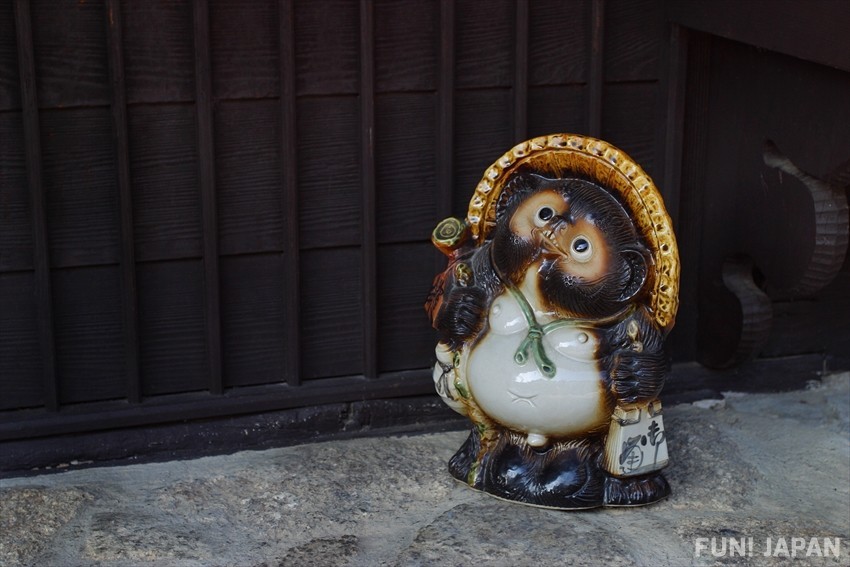
The chubby-bellied tanuki statue is a common sight in front of Japanese restaurants and izakaya pubs. Made from a type of pottery called “Shigaraki ware,” this figure is considered a lucky charm for business prosperity, career advancement, and success in competition. This is because the word “tanuki” sounds similar to the phrase “ta wo nuku” (to surpass others), symbolizing victory over rivals.
The tanuki statue as we know it today is said to have been created by Tetsuzō Fujiwara of the “Tanukiya Sohonke Rian” in Shiga Prefecture. In 1951, when Emperor Showa visited Shigaraki and composed a poem about the tanuki, the statue became famous throughout Japan.
Furthermore, the appearance and accessories of the Shigaraki tanuki represent the “Eight Auspicious Traits” (Hassō Engi), each with its own meaning:
- Straw hat: Always be prepared and protect yourself from unexpected misfortune
- Big eyes: Be aware of your surroundings and make wise decisions
- Smile: Friendliness brings prosperity in business
- Sake bottle: Strive to be virtuous (sake bottle is called Tokkuri 徳利 in Japanese, and the kanji 徳 means 'virtue')
- Account book: Trustworthiness comes first
- Large belly: Have both calmness and boldness
- Money bag: Quite simply, brings good fortune and wealth
- Thick tail: Finish things properly and see them through to the end
As sightseeing spots where you can encounter many tanuki (raccoon dog) statues, we also recommend Shigaraki in Koka City, Shiga Prefecture, as well as Hozukyo Station on the Sagano Scenic Railway in Arashiyama, Kyoto Prefecture. Be sure to take some commemorative photos!
👉What is Shigaraki Ware? Learn more about Japanese ceramics
2. Maneki Neko (Beckoning Cat)|Inviting Good Fortune

The "Maneki Neko" is a classic lucky charm believed to bring prosperity in business. Recently, it has also become popular among international tourists as a souvenir, often called the "Lucky Cat" or "Welcome Cat."
There are several theories about how the Maneki Neko came to be considered a lucky charm, but the most famous is the legend associated with Gotokuji Temple in Tokyo. During the Edo period, Naotaka Ii, the feudal lord of Hikone (now Shiga Prefecture), was passing by Gotokuji on his way back from falconry when a cat beckoned him into the temple grounds. While he was at the temple, a sudden thunderstorm struck, but thanks to the cat, he avoided getting wet and enjoyed a pleasant conversation with the head priest. After this, the lord cherished the cat. Later, at Gotokuji, the cat that brought good fortune was called "Maneki Neko" (招福猫児, normally it would be read as Shofuku Neko) and a special hall was built to enshrine it.
Maneki Neko come in various forms, each with its own meaning and blessing.
- Raising the right paw is said to bring "good fortune with money," while raising the left paw is said to "invite people."
*Some have both paws raised, but this can mean "giving up" and is sometimes considered unlucky. - They often hold a "koban" (gold coin), but some hold other lucky items such as a sea bream, mallet, or rake.
- In recent years, reflecting the times, there are Maneki Neko said to bring blessings such as "romance," "longevity," or "winning the lottery."
- The color of the Maneki Neko is also said to have its own meaning and blessing.
- Examples:
- Gold/Yellow: Increases financial luck
- Calico: Brings good fortune
- Black: Wards off evil, protects against misfortune, ensures family safety
There are many famous spots related to Maneki Neko all over Japan. At Gotokuji, said to be the birthplace of the legend, you can find many Maneki Neko not only within the temple grounds but also in the surrounding shopping streets. In Aichi Prefecture, Tokoname City is home to the famous "Tokoname Maneki Neko Street," and Seto City has the "Maneki Neko Museum," so be sure to visit if you have the chance.
🎫[kkday] Purchase tickets for the Maneki Neko Museum
3. Daruma|The Indomitable Spirit That Always Gets Back Up
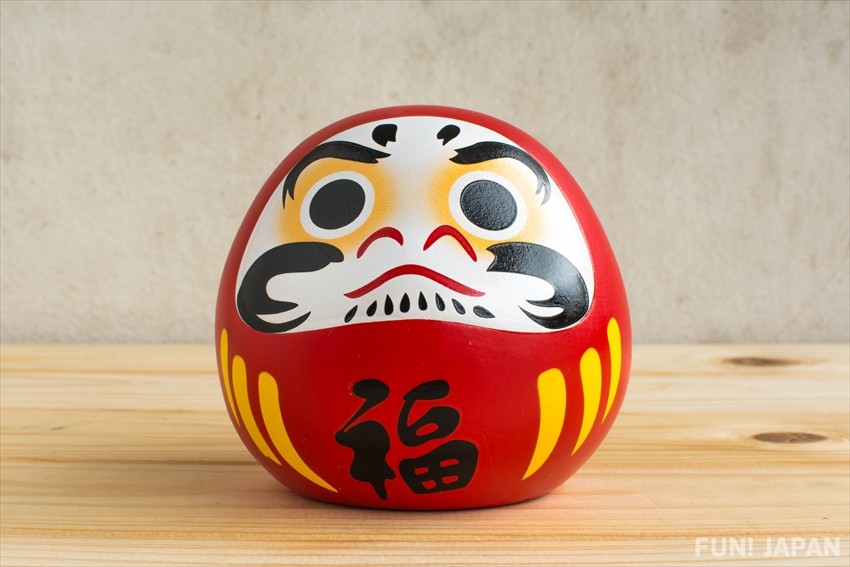
The "Daruma" is designed to right itself when knocked over, symbolizing the Japanese proverb "Nanakorobi Yaoki" ("Fall down seven times, get up eight"). It is known as a lucky charm for business prosperity and success. Its model is said to be the Indian Buddhist monk Bodhidharma.
Bodhidharma was born about 1,600 years ago in Kanchipuram, South India, became a monk, and trained under the name "Bodhidharma" (or in Chinese characters 菩提達磨 which is read as 'Bodai Daruma' in Japanese). He later traveled to China, where he is credited with laying the foundations of Zen Buddhism.
The birthplace of the “Lucky Daruma” is Takasaki City in Gunma Prefecture, at the “Shorinzan Daruma Temple.” It is said that the origin of the Daruma doll comes from the head priest of this temple, Tōgaku Oshō, who taught the art of making Daruma dolls to a farmer named Tomogorō Yamagake, who was suffering from famine.
The unique feature of the Takasaki Daruma is that its eyebrows are shaped like cranes and the mustache from the nose to the mouth is shaped like a turtle—both animals are auspicious symbols of good fortune and longevity.
There are several theories as to why Daruma dolls are painted red: some say it is because the historical figure Bodhidharma and other high priests wore scarlet robes, while others believe the color is meant to ward off evil spirits.
If you want to buy a Daruma doll as a souvenir in Japan, check out the souvenir shops around “Kataokayama Daruma Temple” in Nara Prefecture, which is said to be the birthplace of Daruma worship, or the shops near Takasaki City in Gunma Prefecture. There are also specialty Daruma shops at places like the Nakamise shopping street at Kawasaki Daishi, which is easily accessible from Tokyo, so be sure to take a look.
4. Kokeshi Dolls | Wishing for Children’s Health and Growth
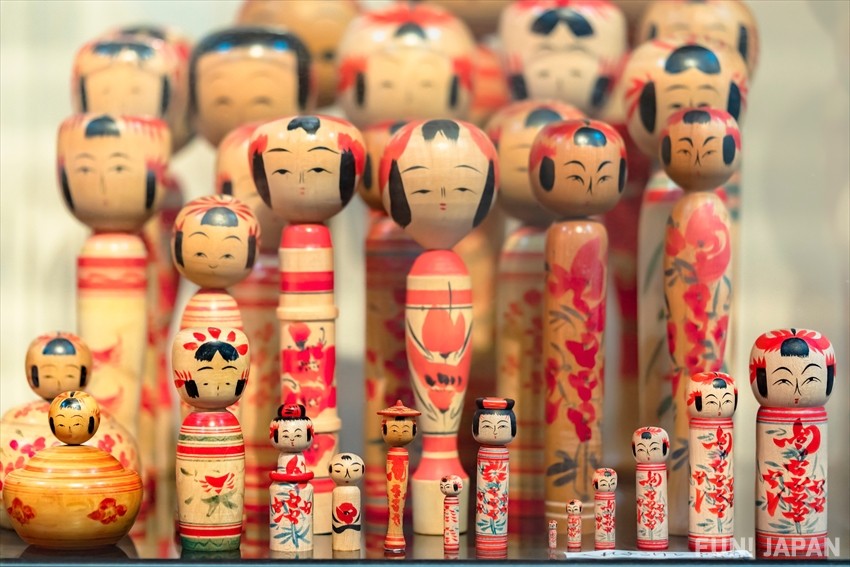
“Kokeshi” are traditional wooden dolls, considered lucky charms for fertility and for wishing children’s healthy growth.
It is believed that kokeshi originated in the late Edo period, when they were made as souvenirs for visitors to hot spring resorts in the Tohoku region. The name “kokeshi” was standardized in 1940, when the “Tokyo Kokeshi Association Naruko Convention” was held at Naruko Onsen in Miyagi Prefecture, and kokeshi artisans and related parties agreed to use the three hiragana characters “こけし.”
Togatta, Naruko, and Tsuchiyu Onsen are known as the “three major birthplaces of kokeshi,” and each region has its own unique shapes, patterns, and techniques that have been passed down through generations.
👉What are Japan’s “Traditional Dolls” and “Kokeshi”? A Thorough Explanation
🎎Are “Traditional Kokeshi” expensive or affordable? Check the price range (Yahoo! Shopping)
Animal Motifs That Bring Good Luck
In Japan, there is a deep-rooted culture of revering certain animals as messengers of the gods or as special beings that bring happiness. Not only do people hope to receive the positive traits and habits of these animals, but it is also a major feature of Japanese culture to use wordplay—matching the sound of an animal’s name with a wish or hope.
5. Cranes and Turtles | Longevity

As the Japanese proverb “Cranes live a thousand years, turtles live ten thousand years” goes, these animals are symbols of longevity and marital harmony. Their motifs are often used in wedding kimono patterns and celebratory gifts.
6. Zodiac Animals | Guardians of the Year
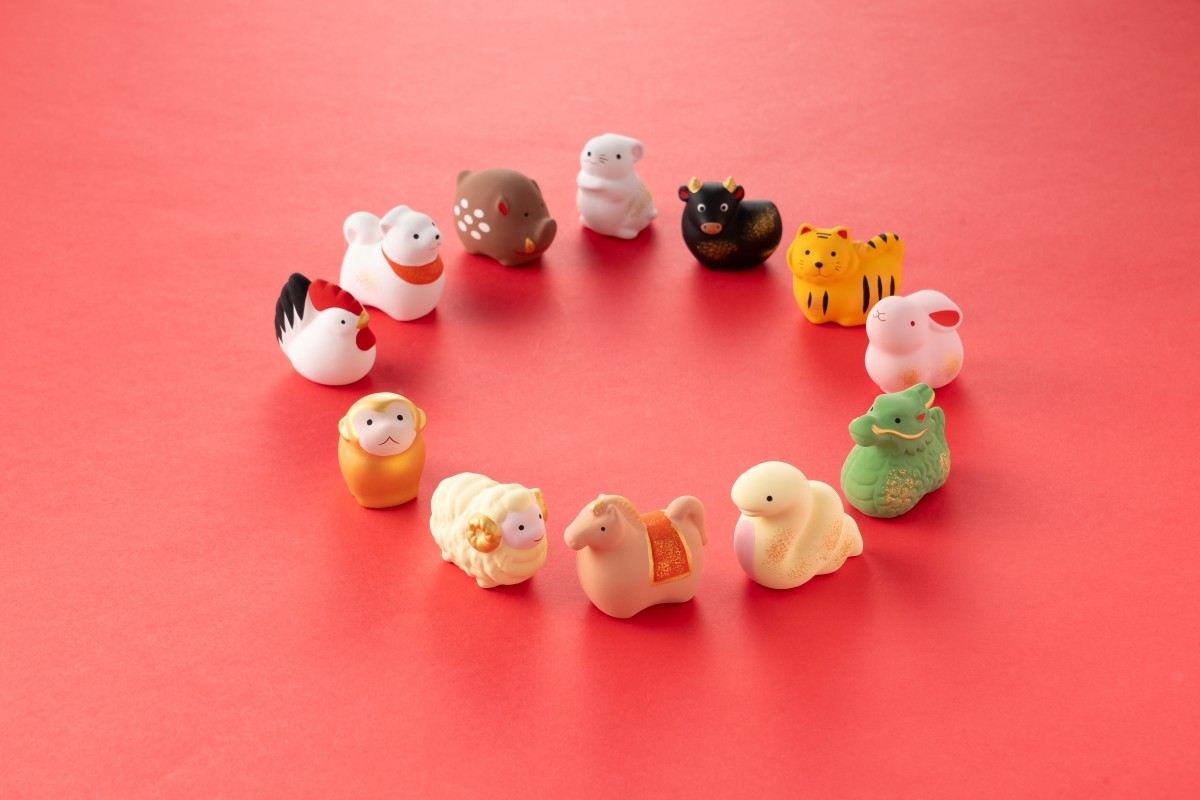
Many Asian countries, including Japan, have the culture of the “Twelve Zodiac Animals,” where each year is represented by one of twelve animals in a repeating cycle. In Japan, the animal of the year is called the “eto,” and it is customary to display figurines of that year’s zodiac animal at the entrance or in the tokonoma alcove of the home during the New Year.
By displaying zodiac ornaments, people welcome the Toshigami (the deity who brings happiness for the year) at New Year’s, and pray for family safety, business prosperity, and a bountiful harvest. It is also said that wearing accessories featuring your own zodiac sign or the zodiac animal of the year can ward off misfortune.
Zodiac ornaments are one of the most common good luck charms in Japan, and are also used as “New Year’s decorations” to celebrate the beginning of the year.
7. Sea Bream | Celebration & Good Fortune
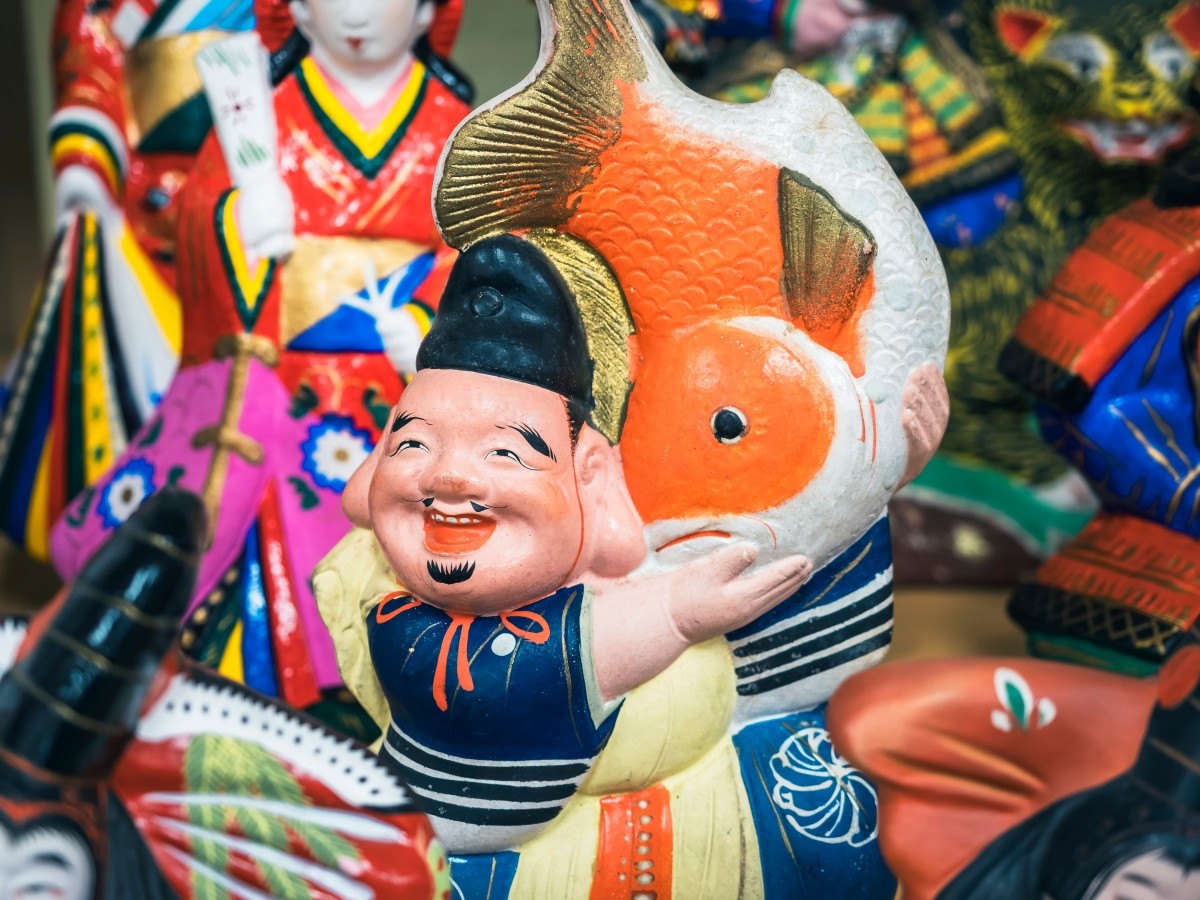
The sea bream (tai) is used as a symbol of celebration and good luck because its name sounds like “medetai,” which means “auspicious” or “happy” in Japanese. It is also famous for being held by Ebisu, one of the Seven Lucky Gods.
👉A festival where Ebisu is the star? What is “Ebisu-ko” and when is it held?
8. Carp | Success & Advancement
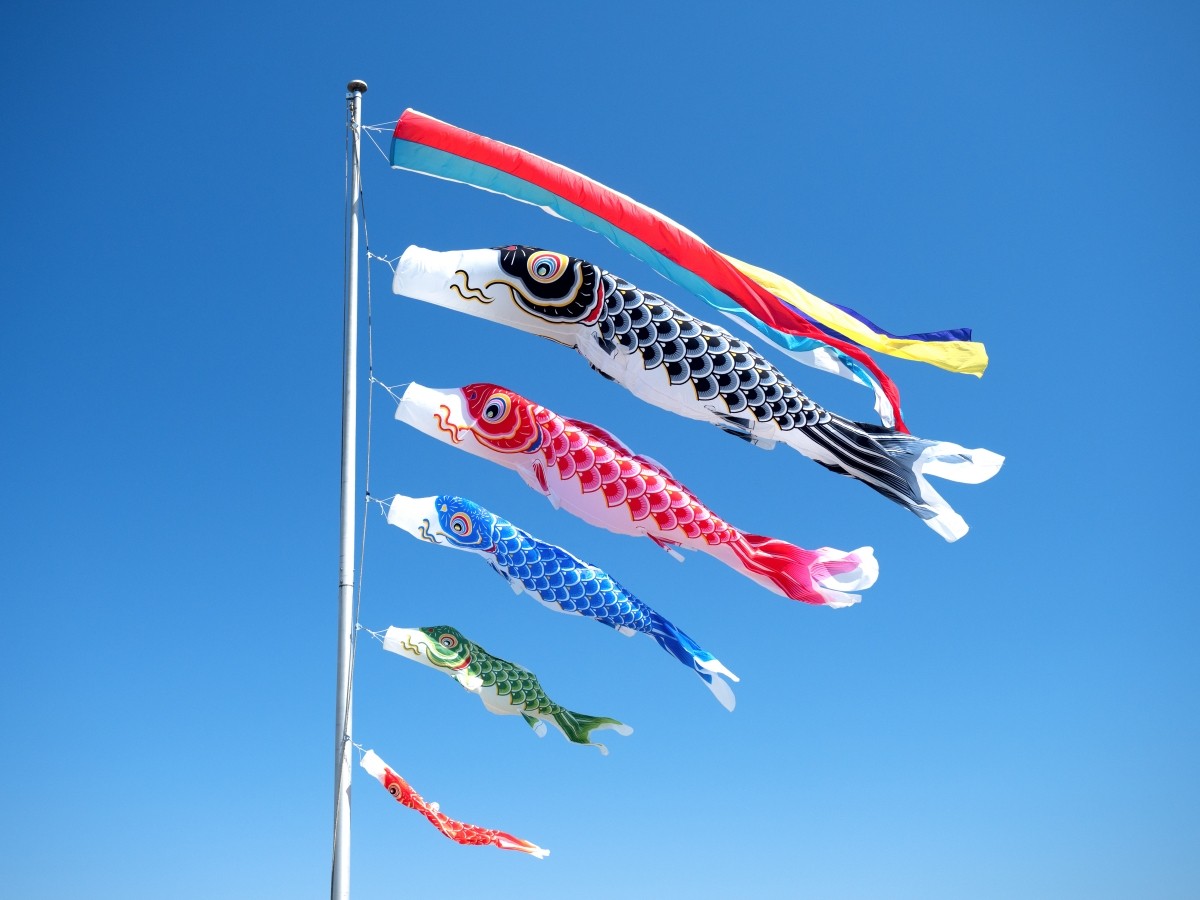
The carp swims upstream against the current. According to the Chinese legend of the “Dragon Gate,” a carp that climbs the rapids at the headwaters of the Yellow River becomes a dragon. Because of this, the carp is a symbol of overcoming difficulties and achieving success or personal growth.
In Japan, May 5th is celebrated as “Tango no Sekku,” a traditional event wishing for the health and growth of boys. As part of this, people display carp streamers (koinobori) to express hopes for success and advancement in life.
👉What is “Tango no Sekku,” the May 5th celebration for Children’s Day? A detailed explanation
9. Frog | Safe Return & Revival

The word “kaeru” (frog) is pronounced the same as “kaeru” meaning “to return” or “to come back” in Japanese. Because of this, frogs are associated with safe travels (returning home safely) and financial luck (money coming back to you).
It is common to see ceramic frog ornaments placed in the gardens of Japanese homes.
10. Owl | Good Luck & Wisdom
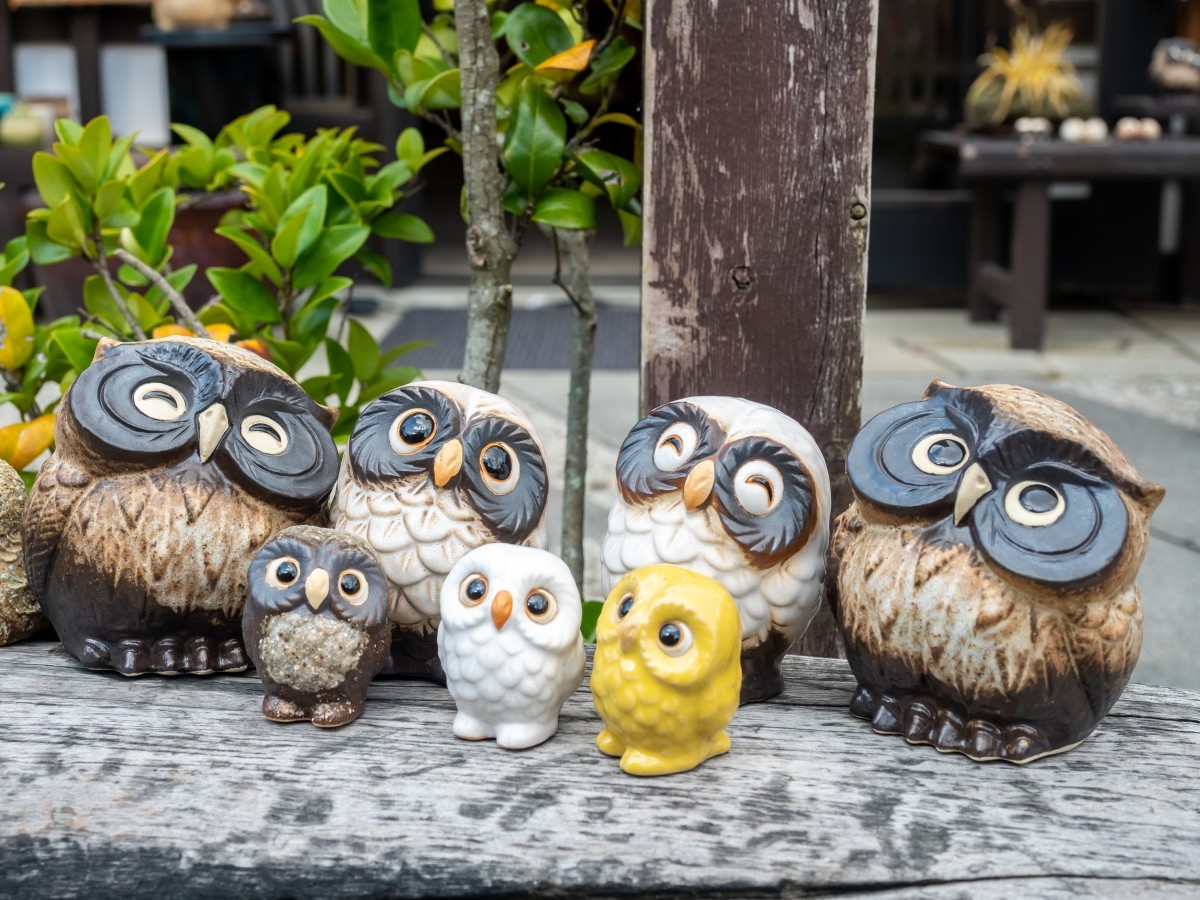
Because the word “fukurou” (owl) can be written with characters meaning “no hardship” (不苦労=fu-kurou) or “fortune comes” (福来郎=fuku-rou), the owl is seen as a symbol of good luck and happiness.
Owls can turn their heads all the way around, which is associated with the idea of “never running out of money.” In Japanese, the phrase “kubi ga mawaranai” (can’t turn one’s neck) is an idiom for being in financial trouble, so the owl’s flexible neck is seen as a sign of financial fortune.
11. Rabbit | Progress & Good Fortune
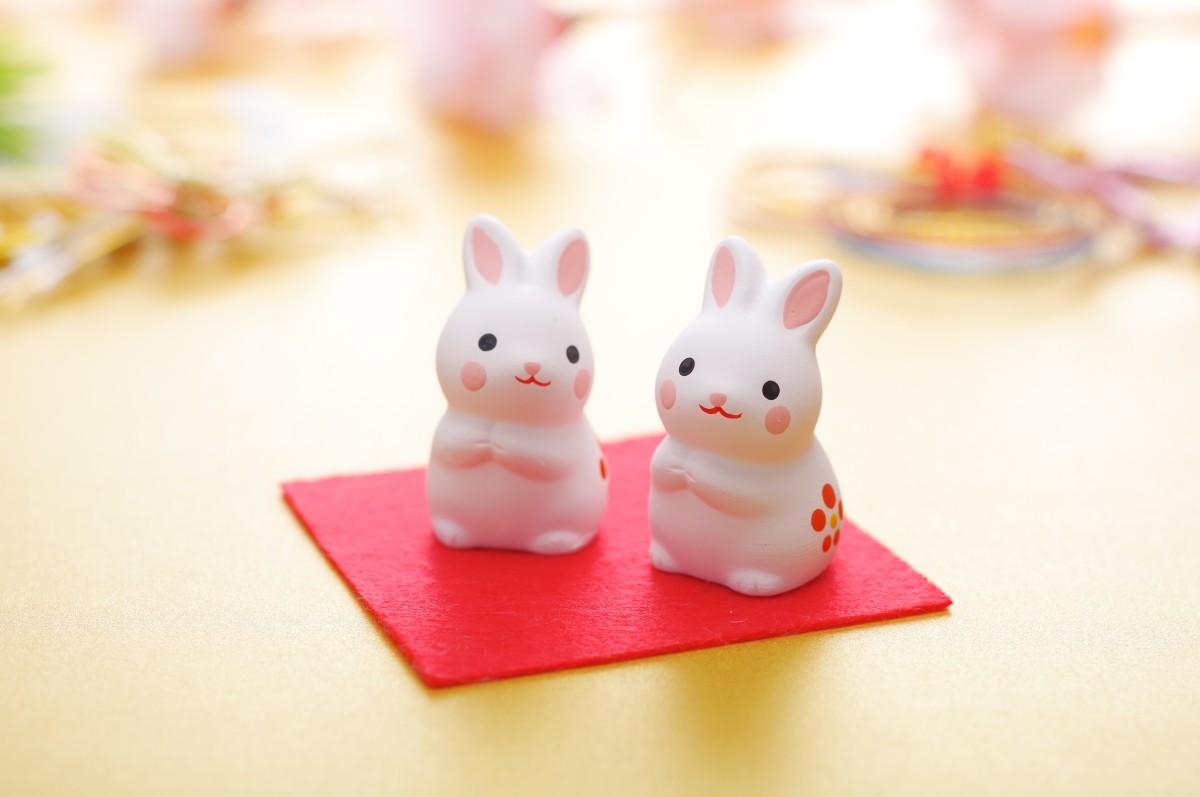
Because rabbits hop energetically with their hind legs, they are seen as symbols of progress and ambition. In Japan, the word for luck is “tsuki,” which also means “moon.” There is a legend that a rabbit lives on the moon, so rabbits are also thought to bring “tsuki” (luck/moon).
Rabbits are familiar to Japanese people, as they are one of the animals of the zodiac and also appear in the myth “The White Hare of Inaba.”
12. Dragonfly | Good Fortune in Competition

Because dragonflies only move forward and never retreat (they do not fly backward), they have long been called "victory insects" and were favored as motifs on samurai helmets and armor. Even today, they are considered symbols of good luck in competitions and battles.
13. Dragon | Rising Fortune
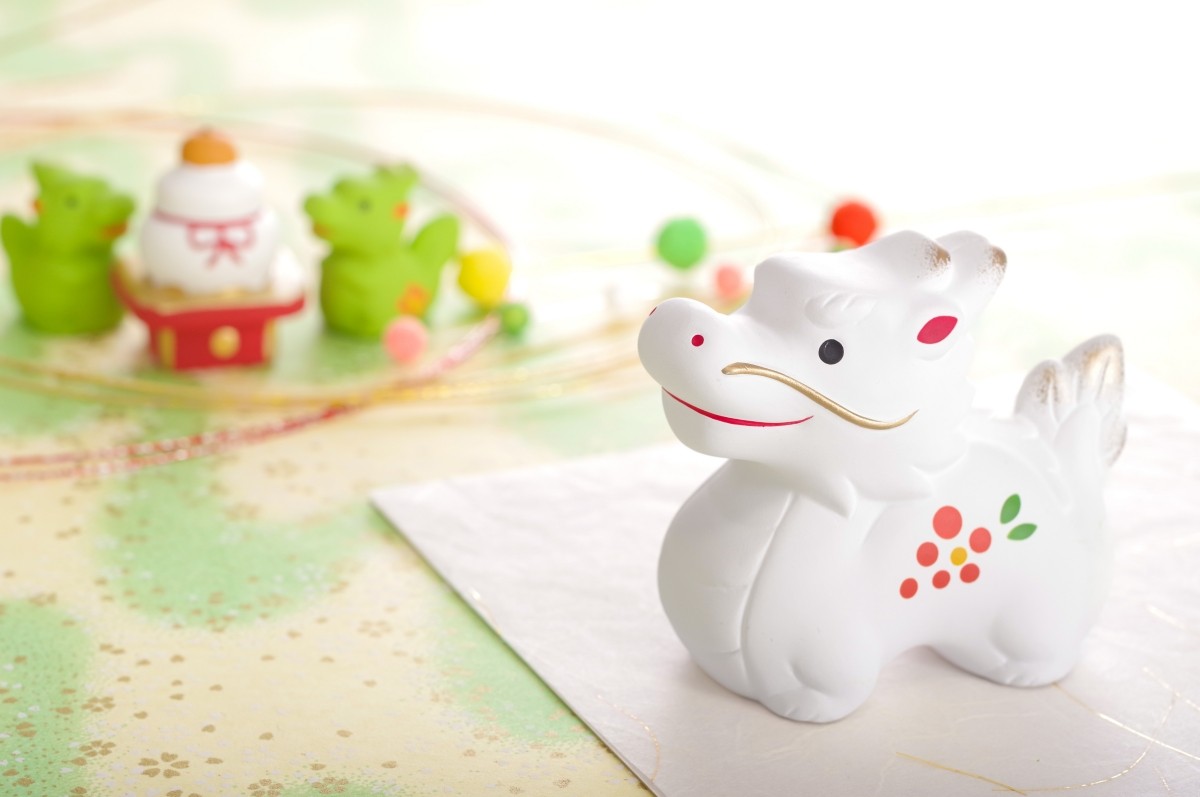
Because of its powerful ascent into the sky, the dragon is believed to possess strong powers of rising fortune, authority, and protection. It is a common motif in ceiling paintings and carvings at shrines and temples.
The dragon is also one of the twelve animals of the Chinese zodiac.
Nature & Plant Motifs Symbolizing Japan’s Beautiful Scenery and Vitality
Japanese people have long felt a special power in the vitality of plants that survive in nature. These motifs are often used in traditional crafts and everyday designs.
14. Mt. Fuji | Japan’s Best & Ever-Expanding Fortune
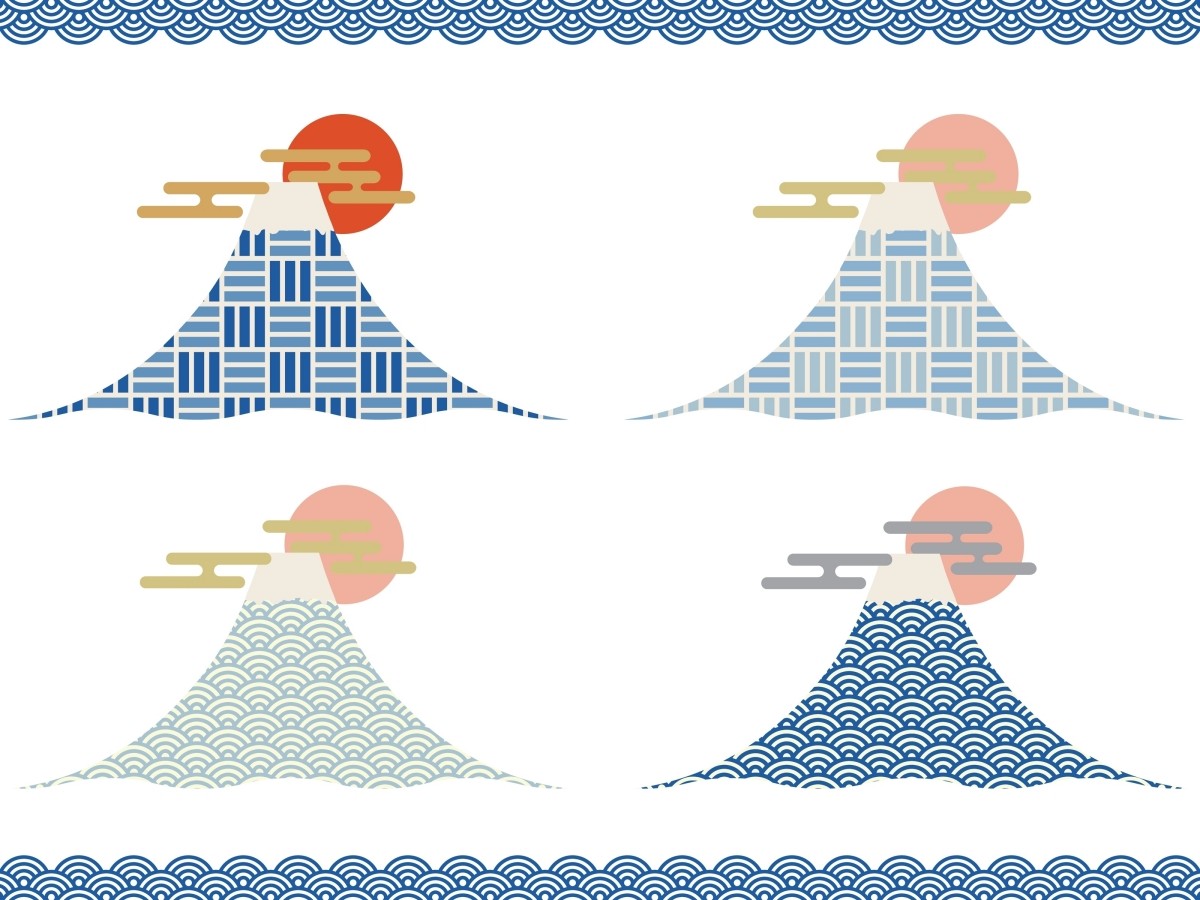
Its majestic appearance is a symbol of “Japan’s best.” The shape, spreading from the peak to the base, is also called “suehirogari,” representing a future that grows ever brighter and more prosperous.
Additionally, during New Year’s, there is a saying: “Ichi Fuji, ni taka, san nasubi” (“First Mt. Fuji, second a hawk, third an eggplant”). It is believed to be lucky if your first dream of the year features Mt. Fuji, a hawk, or an eggplant.
15. Pine, Bamboo, and Plum | Perseverance & Vitality
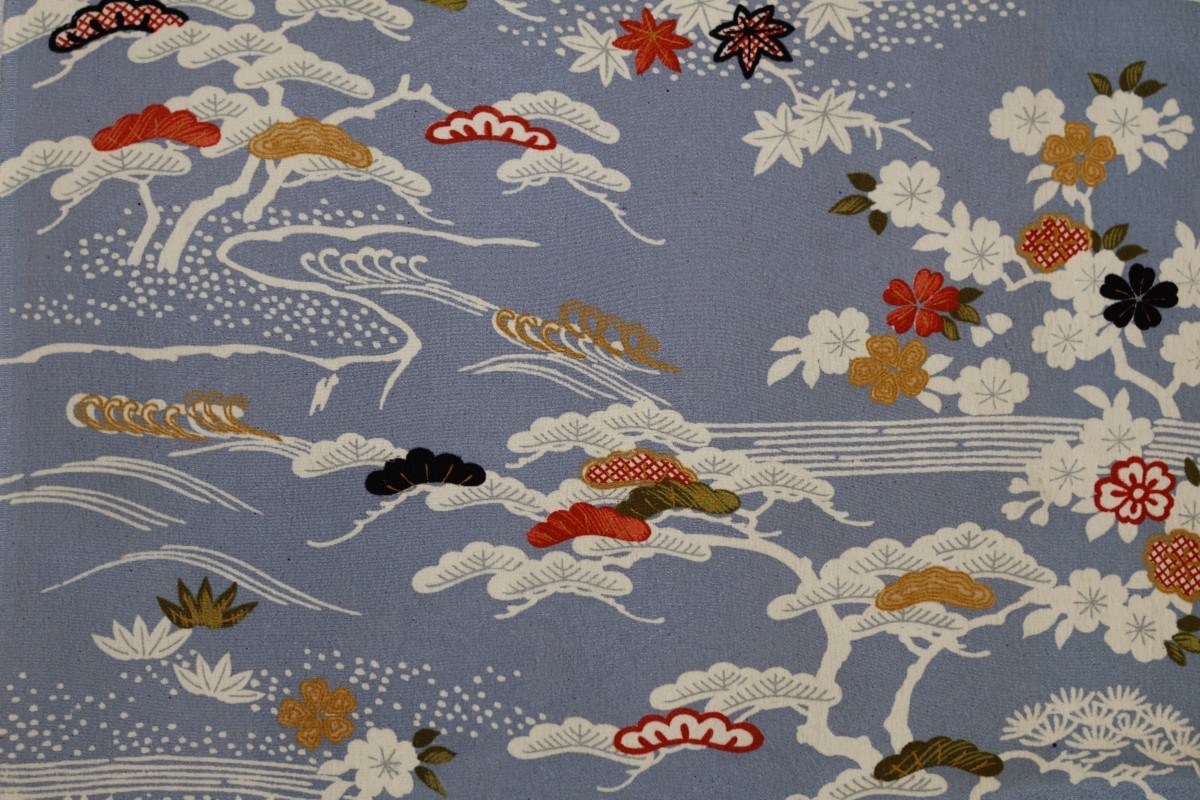
This motif features a set of three: “pine,” “bamboo,” and “plum,” collectively known as “Shochikubai.” Sometimes, these three are also used to indicate ranking, in the order of pine, bamboo, and plum.
- Pine: Stays green even in winter (longevity and immortality)
- Bamboo: Grows straight and does not break (growth and vitality)
- Plum: Blooms ahead of spring (nobility and good fortune)
16. Gourd (Hyotan) | Good Health & Protection from Evil

The gourd, with its vines that grow and bear many fruits, is a symbol of prosperity. Six gourds together (mu-byo, a play on words meaning “no illness”) are often used as a charm for good health.
Additionally, the gourd’s narrow waist is said to absorb evil spirits, giving it the meaning of warding off evil.
17. Coral | Longevity & Safe Childbirth
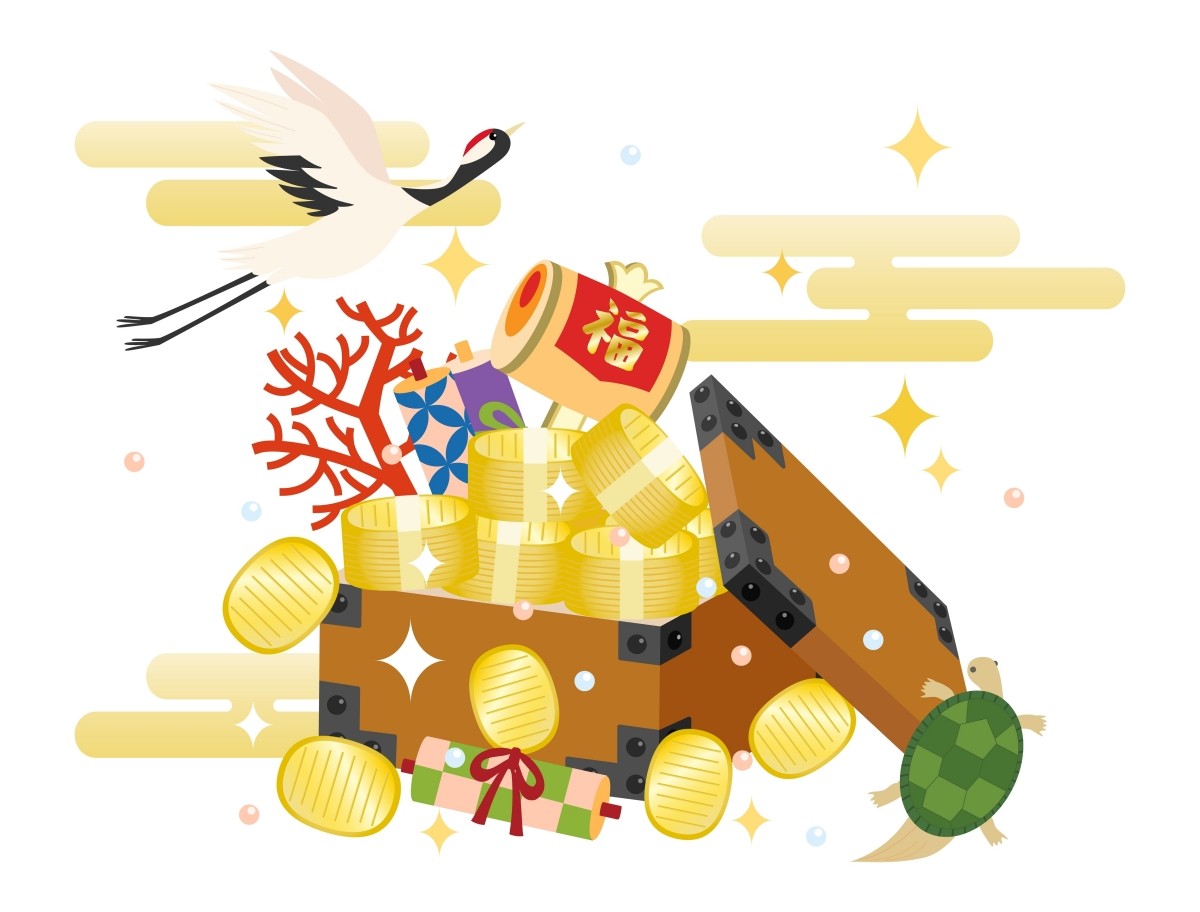
Coral, which has long been treasured as a gemstone, is a symbol of longevity due to its slow growth and beauty. Also, because the word “sango” (coral) sounds like “sango” (after childbirth), it is a popular motif for prayers for safe delivery. It is often depicted on treasure ships (described later) and treasure chests.
From Legendary Treasures to Everyday Tools! Motifs of “Treasures & Tools” That Bring Good Fortune
Lucky charms based on everyday tools and symbols of wealth that Japanese people have used since ancient times continue to be beloved as the most familiar lucky items for those wishing for business prosperity and family safety even today.
18. Uchide no Kozuchi (Lucky Mallet) | Wealth & Wish Fulfillment
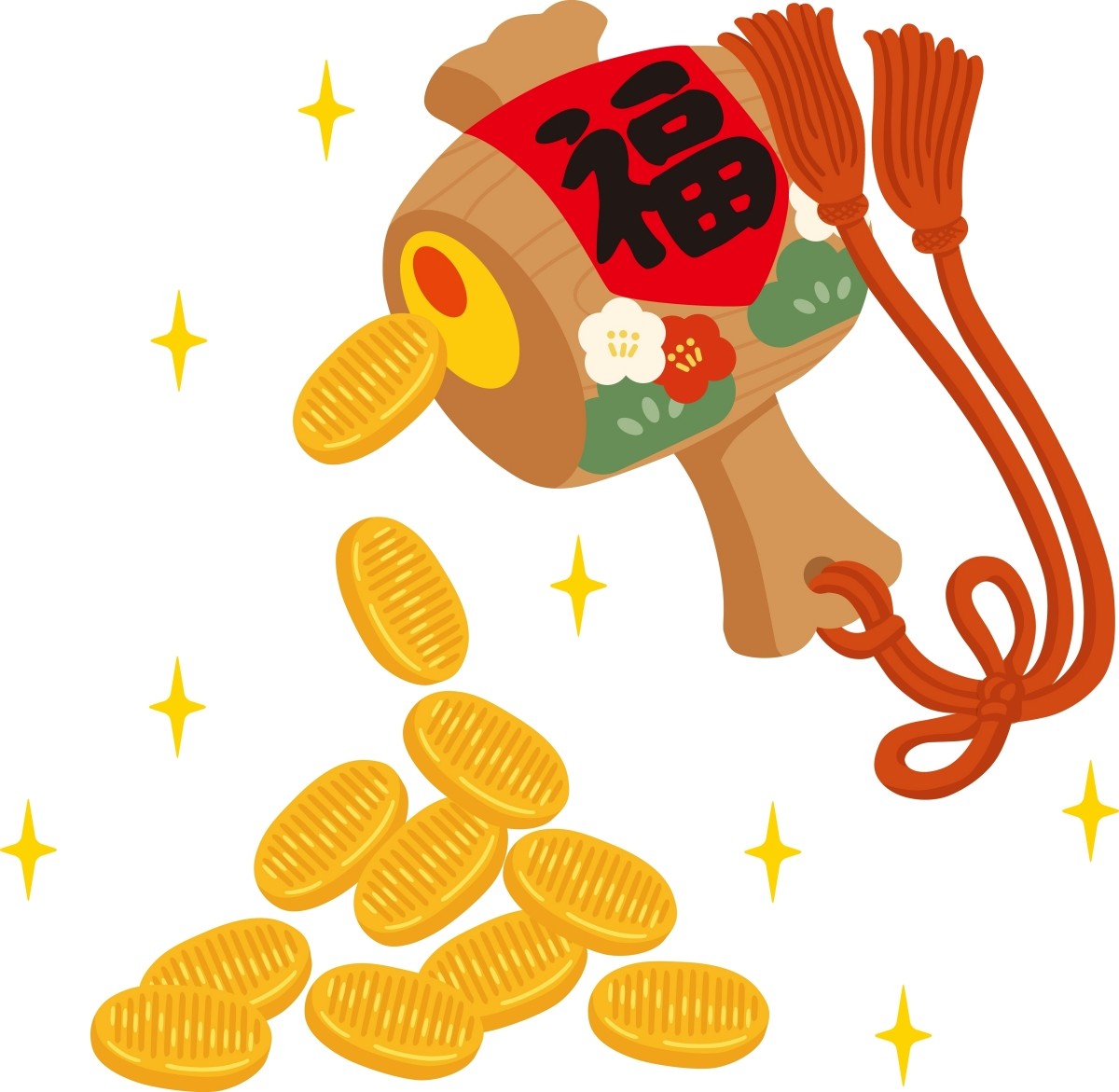
This is the legendary mallet said to grant any wish when shaken. It is famous for appearing in the folktale "Issun-boshi" and as the item held by Daikokuten, one of the Seven Lucky Gods. As a symbol of good fortune and prosperity, it is often used in the design of keychains and other items.
👉What kind of story is "Issun-boshi"? Introducing 5 Classic Japanese Folktales Including Momotaro!
19. The Seven Lucky Gods | Seven Blessings
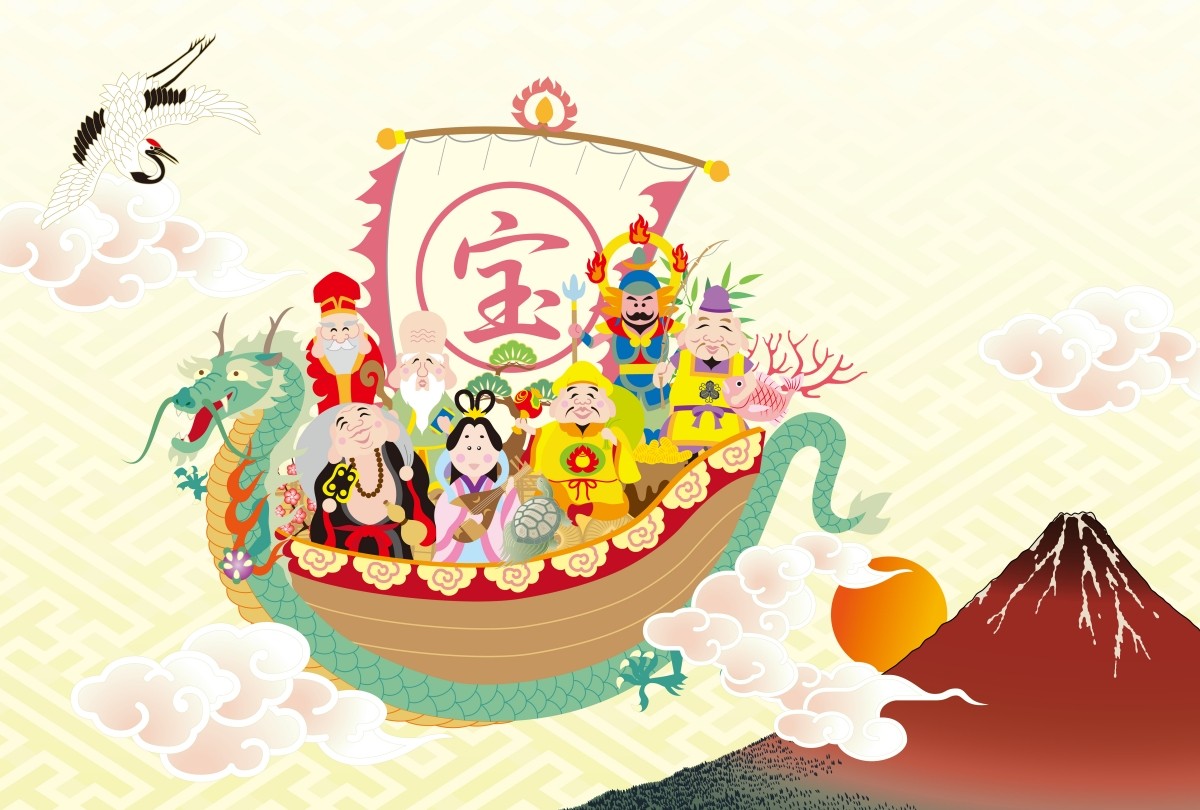
The Seven Lucky Gods (Shichifukujin) is a collective term for the seven deities: Ebisu, Daikokuten, Bishamonten, Benzaiten, Hotei, Fukurokuju, and Jurojin. They are believed to bring a variety of blessings, such as wealth, longevity, and prosperity for descendants.
The image of the "Treasure Ship" carrying all seven gods is considered the ultimate lucky motif, as it is said to bring many blessings at once.
👉In Japan, the "Shichifukujin Meguri" pilgrimage to seven temples and shrines is also recommended!
20. Okame & Hyottoko | Laughter & Harmony

These are traditional Japanese masks. "Okame" is a plump-faced woman, and "Hyottoko" is a man with pursed lips. Their unique expressions make people smile, embodying the Japanese proverb "Good fortune and happiness will come to the home of those who smile." They are symbols of marital harmony and family safety.
21. Folding Fan | Prosperity & Growth

The shape of an open folding fan, spreading out toward the end, represents "suehirogari" (ever-expanding prosperity). It is considered a symbol of future growth and success, and is often given as a celebratory gift for good luck.
22. Koban Coin | Wealth & Fortune

The "koban" was a currency used during the Edo period, and as its appearance suggests, it is a symbol of wealth. You often see it held by Maneki-neko (beckoning cats) or featured in amulet designs. It straightforwardly expresses the wish, "May you accumulate wealth."
23. Rice Bale | Abundance & Never Lacking Food

A bale filled with rice symbolizes "gokoku hojo" (abundant harvest of the five grains) and the wish to never be troubled by lack of food—a symbol of wealth. Daikokuten, one of the Seven Lucky Gods, is often depicted standing on a rice bale, and it is also commonly seen as part of treasure ships or treasure chests.
24. Spinning Top | Smooth Progress

The spinning top, a traditional toy for children, spins vigorously and steadily, symbolizing smooth progress in work and life, as well as good financial circulation. It also carries the meaning of "standing on one's own" (independence), making it a popular gift for children.
25. Hagoita | Repelling Misfortune
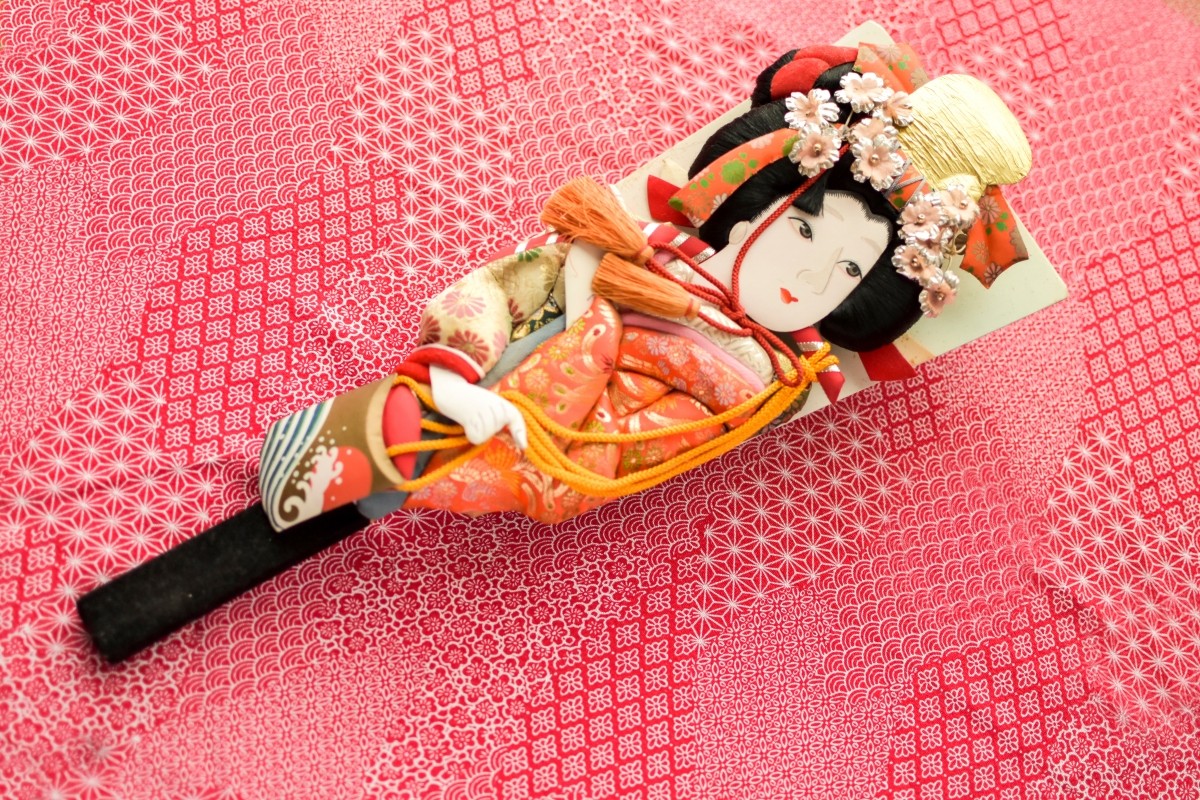
This is the equipment used for the New Year’s game “Hanetsuki.” Hanetsuki is a traditional Japanese game similar to badminton, where players use a wooden paddle called a “Hagoita” to hit a shuttlecock with a weight attached.
The hagoita is believed to have the power to “drive away evil,” and is often used as a motif in traditional crafts and New Year’s decorations, especially as a symbol wishing for the healthy growth of girls.
👉Introducing 30 Traditional Japanese Children’s Games, Including Spinning Tops and Hanetsuki!
Learn the Meaning of Motifs and Enjoy Choosing Japanese Souvenirs
Japanese lucky charms each carry stories and wishes within their depicted motifs.
For example, for a friend in business, you might choose something featuring designs like a “Rising Dragon,” “Mount Fuji,” or the “Lucky Mallet.” For a friend who is getting married, motifs such as “Cranes and Turtles” or “Pine, Bamboo, and Plum” are appropriate. By understanding the meaning behind these motifs, you can select a more special gift that conveys your wishes for the recipient’s happiness. Be sure to keep this in mind the next time you go shopping!
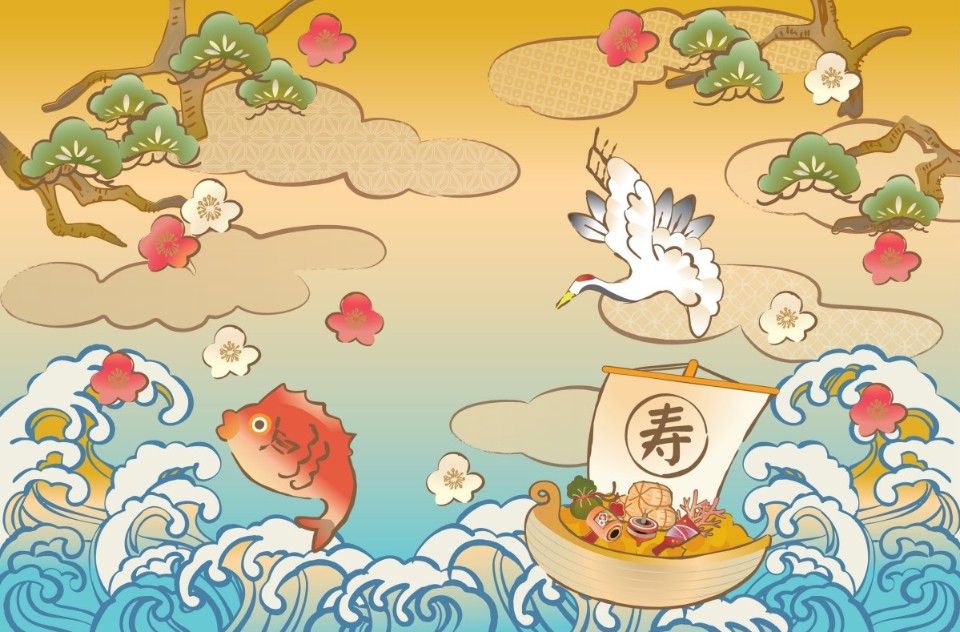
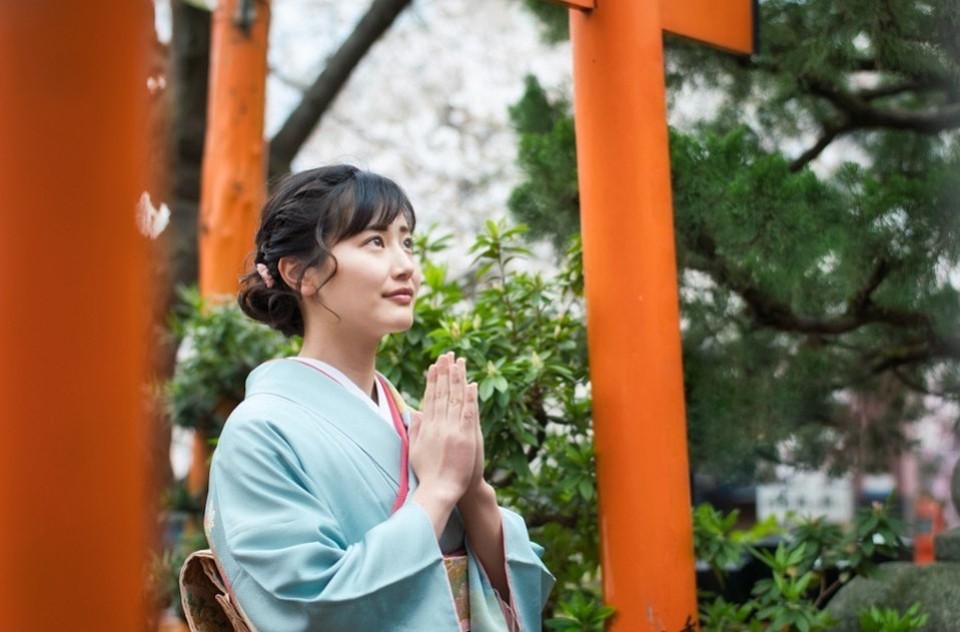





Comments